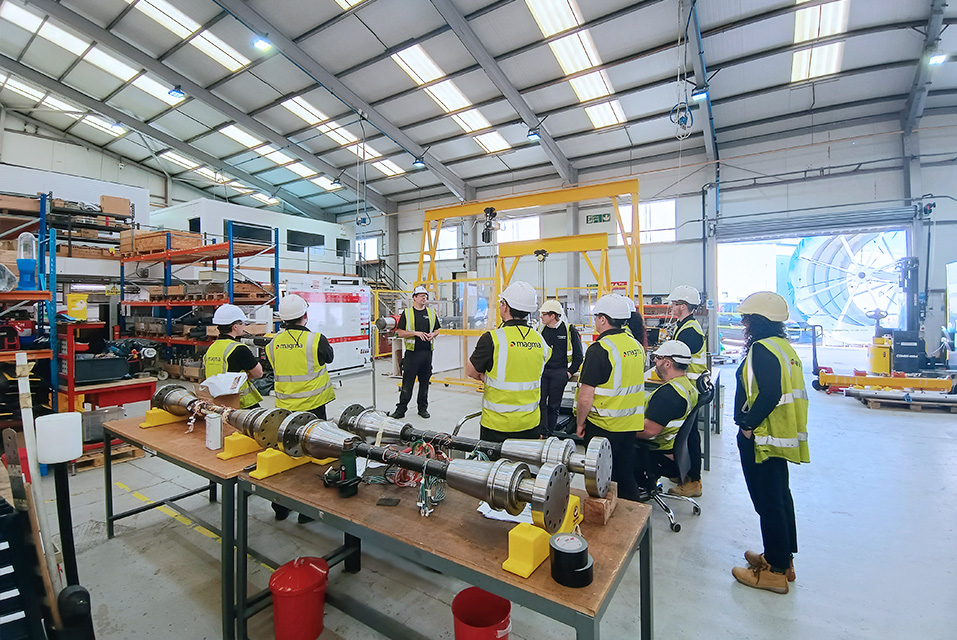When talking to you, our lovely candidates, we probably get more questions about CVs than anything else. So we thought we’d share our advice more widely and provide a couple of example templates as a general guide. (Many more are available on the web).
As a general rule, less is more when it comes to CVs, so producing an effective document isn’t beyond anyone. Moreover, it’s easy to eliminate the mistakes we commonly see.
Every hiring manager has their own opinion as to what constitutes a great CV, so it’s impossible to give definitive advice to cover every scenario. What I can do is provide some general truisms based on my experience, and that’s what you’ll find here.
Having got that out of the way, let’s make like a CV and get to the point.
How to think about a CV
A CV has one job: to sell you enough to get you through the door to an interview, where you can do the rest. Your CV will most likely end up in a pile (digital or physical) and will be skim-read first time round to determine whether it warrants closer reading.
So your CV needs to cut to the chase and sell you, fast. A fussy or complicated-looking CV will force a reader to work too hard. Nothing in a CV should get in the way of the reader’s understanding, and every choice you make should facilitate this. That applies to layout, order, typeface and language.
Length
Keep your CV to no more than two pages (two sides). Some people argue that if your experience warrants more space, use it, but many of the most senior and accomplished professionals I know manage to keep theirs to two pages. Communicating concisely is a skill, and one the best professionals have often mastered. If two sides is good enough for them, it’s good enough for anyone.
Example CV templates
You can view and download some examples of sensible, effective layouts here at the links below. We made the first two. These are only an approximate guide only, designed to illustrate in simple terms the things we’d encourage you to think about.
Example 1: CV for a fictional Marketing Manager
Example 2: CV for a fictional Senior HR professional, with alternative layout
Here's a few more you may like, from Total Jobs, for different scenarios.
Now let’s have a more in-depth discussion about each section of a CV.
Layout
A CV’s layout should be chosen entirely to make it as easy as possible to read. Use simple, non-serif, attractive fonts, headings, lines and bullets to help the reader work through your CV. But don’t aim for “fancy”: avoid swirls, swishes or elaborate graphical elements.
I would recommend creating your CV as a simple Word document. Many firms use an Applicant Tracking System (ATS) to automatically analyse CVs for keywords before sorting, filing or prioritising them. These types of software generally process simple Word documents best.
Here’s the structure I suggest you follow:
1. Contact details
Keep it simple. Have your name, contact details and address (if you wish) central and neat, with your name in larger font than the rest. Follow with…
2. The Personal Statement or Profile
Your personal statement or profile can be a few lines long. It’s a very concise summary of what you can offer and why someone should hire you. It’s your elevator pitch where you mention your unique selling points: the combination of skills, qualities, strengths and the overall “theme” of your combined achievements that make you great!
For example, are you someone who has consistently proven that you can motivate and transform underperforming teams? Do you have a history of identifying and removing factors that are a barrier to success? Are you able to turn complex ideas into working policy? Have you helped develop and launch successful brands? (And will what comes next in your CV evidence any of this?)
Here’s a reminder of a personal statement in one of our template CVs.
3. The Employment History or Career History
Next, list your employment history chronologically, as shown in our templates, with the most recent role at the top. Quite a lot of people have this the wrong way round, with their current job at the end of the career history section. Your recent roles are the most relevant and reflect who you are today, so they go at the top!
Your recent experience should also be the most detailed, with successively less detail the further back you go.
If you have a lot of experience, you may need to make decisions about how far back to go in your work history. Experienced professionals often summarise their early career in a short paragraph or using bullets showing job titles and dates only (i.e. no detail).
Alternatively, you could simply go back only as far as your career history becomes particularly relevant and persuasive, provided you still give enough detail to give a sense of your career journey. If in doubt, ask us!
The key to a good CV is relevance – cite the most relevant and compelling experience and achievements for the role you’re applying for.
4. Achievements versus responsibilities
Many people spend valuable space listing their responsibilities for each role. It’s a common mistake. Outline responsibilities briefly, before detailing key achievements in well-written and totally original (i.e. unique to you) bulleted sentences. Achievements are more important and persuasive than responsibilities but they don’t all have to be numbers- and ROI-based. Different roles allow for different achievements. Think about where and how you have made a difference to teams, people, culture, vision, product launches, reputation, processes, time-saving and so on - as well as more obvious results like sales, revenue, margin and cost-savings.
5. Education/qualifications/training
It’s okay to have all these in one section towards the end of your CV. Keep it brief, neat, relevant and to the point. For many roles (including science/tech/engineering) it can be useful to cite final-year projects, placements or competitions entered or won, provided they are relevant and fulfil the all-important objective of selling you.
6. Optional: Skills summaries
As an alternative to listing education and training/qualifications together, a concise list of relevant technical skills at the end of a CV is fine. It’s generally most associated with technical and IT skills, less so for soft skills that can feature in your personal statement or referenced in your career history. Having said that, lists of soft skills at the end of a CV can work, especially where they demonstrably allowed an individual to make a difference, and are crucial to the role.
7. Optional: Hobbies & interests
There is debate about whether or not to include hobbies at the end of a CV. My take on it is this: a CV is a selling document, so include content that sells you. Quite a few hiring managers I know look for experience outside of work that dovetails with a person’s chosen profession, such as evidence they enjoy spending time in teams, managing clubs, volunteering or pushing their limits. If your interest sell you in a way that’s relevant, include it. But exclude irrelevant information on the same grounds.
8. Dos and don’ts – a roundup
Do
- Have your name and personal contact details front and centre.
- Use a combination of headings/bold/underlining/bullets/spacing to create a simple, neat document that’s easy to read.
- Keep your CV short and relevant – 2 sides is perfect.
- Have a strong summary/profile section.
- Ensure your CV matches your LinkedIn profile.
- Proof your CV carefully, or ask someone else to.
- Ensure your CV contains keywords associated with your profession, while avoiding death-by-jargon in your career history.
Don’t
- Include a photo. A photo always makes a CV look messier, no matter how professionally-presented it is. It also invites unconscious bias.
- Use graphics such as pie charts or graphs to illustrate your achievements or anything else. Unless you happen to know that graphics are the norm for the role you’re applying for, keep layout very simple.
- Have any unaccounted-for gaps in your experience.
9. Advanced CV writing: finding your career story
Every career can be presented as a kind of story, showing how the choices you made from your education onwards all helped you move towards your preferred career, and how you chose to refine and hone your skills through training, deliberate sideways career moves and so on. Perhaps you chose to work with an employer because you knew they would provide a specific experience or skillset you were looking for.
Find the narrative in your career: what’s the common theme that links your roles? What’s the story of your development and how you’ve shaped your career? How do your qualities, skills and experience all come together to produce the professional you are? It’s a good idea to talk through this with a friend or mentor if you can.
10. Exceptions to the rule/s
All of this is only general advice, so break any of my “rules” if you’re confident you know better! To a point, every industry has its own rules and codes. For example, while CVs are generally best kept very simple in layout, a graphic designer might have some leeway to get creative with that simplicity – provided their creativity doesn’t get in the way of the reader’s understanding. Always exercise your own best judgement and research typical CVs for your industry or job function if in doubt. The templates we have provided are very simple, but by all means come up with alternative versions.
Keeping a record
One final piece of advice: keep updating your CV as you go, or make a note of your key achievements in a file, whether that’s a word document, notebook or spreadsheet. When you next need to update your CV, you’ll be glad you did this.
Don’t forget to get in touch if you have any questions.
- Nick
*I’d like thank Gareth Wyn Jones for his input into this piece. Greatly appreciated, Gareth.
Insights

Working in startups, scaleups and giants: an interview with Karandeep Singh Langford Bhogal
Karandeep Bhogal is the kind of person who gets called upon to make things happen within the technology sector - regardless of product, application or context.

When your employer brand speaks for itself: a case study of Magma Global
Josh Richardson joined Magma Global in 2014 after completing a Master’s Degree in Mechanical Engineering. He now leads the Design and Test Department, specialising in the mechanical testing of composite structures

Ten years and £15,000: an American engineer’s journey to settling in the UK
Sophia Heath is a friend to Gerrell & Hard, a talented STEM professional and one of a group of successful Junior Product Engineers Gerrell & Hard placed at Polestar in 2021.

Subscribe to our LinkedIn Newsletter, TechTalent, for news and opinions from the frontline of tech recruitment.
